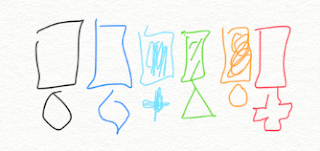Control Influence Accept was taught to me a few years back by one of the team leaders I was coaching in agile mindset and approach to team and delivery. I am not sure where it originated as a consequence and searches on Google have been non-satisfactory.
Essentially, as the C-I-A was explained to me, every situation that one finds oneself in (as I explain to coachees), one asks upto 3 questions in the order Control - Influence - Accept (CIA):
Question 1: Can I Control this situation?
If yes, then Control it (by using your management position or leadership)!
If no, then ask the next question,
Question 2: Can I Influence this situation?
If yes, then Influence it (by working with your network, expanding your network, orchestrating and asking your network for assistance in changing the situation)
If no, then ask the next question,
Question 3: Can I Accept this situation?
If yes, then Accept it (by opening your heart and open your mind and embracing it, so that your new personal reality becomes your new personality)
If no, then you have only 1 healthy choice - to leave the situation.
Failure to Accept the situation, and not leave this situation will cause you stress and all the negative consequences that stress brings. It will lead to negative behaviours and cynical comments leaking out, causing you to be mis-labelled further deepening the pygmalion effect and negative vicious reinforcement cycles. (see my post on labels being applied to people and more importantly how you can help the team "fix" the problem)
So you can use the CIA for personal coaching, and you can use it for team coaching quite effectively as well. I typically use it for helping teams understand if the potentially SMART-ifiable productivity improvement and/or happiness improvement actions they have proposed within the team's periodic Retrospectives are actually Achievable.
I did see several parallels in Stephen R Covey's excellent The 7 Habits of Highly Effective People where he discussed the 3 spheres that we live and work within as concentric circles. The Control Sphere is the smallest space, followed by the Influence Sphere, followed by the Accept Sphere. Basically we need to realise how little in life we do control, versus how much we think we control. An example he uses is the common illusion of control when driving in our carefully selected vehicle...and getting stuck in a traffic jam. We think because we can control our music selection, volume, air temperature and fan speed, we have control, but actually we have to accept that the dynamic system of the traffic on the roads is in control, we have very very little in reality.
I am planning on adding another 2 posts to extend the conversation and observations I've had about this CIA over the past 5+ years, so keep an eye out for the followups!
Thankyou for reading! I bumped into a previous team member after 6 years, and he is still using this fantastic tool with his own teams ever since!
 |
| CIA For Control Influence Accept Any Situation |
Essentially, as the C-I-A was explained to me, every situation that one finds oneself in (as I explain to coachees), one asks upto 3 questions in the order Control - Influence - Accept (CIA):
Question 1: Can I Control this situation?
If yes, then Control it (by using your management position or leadership)!
If no, then ask the next question,
Question 2: Can I Influence this situation?
If yes, then Influence it (by working with your network, expanding your network, orchestrating and asking your network for assistance in changing the situation)
If no, then ask the next question,
Question 3: Can I Accept this situation?
If yes, then Accept it (by opening your heart and open your mind and embracing it, so that your new personal reality becomes your new personality)
If no, then you have only 1 healthy choice - to leave the situation.
Failure to Accept the situation, and not leave this situation will cause you stress and all the negative consequences that stress brings. It will lead to negative behaviours and cynical comments leaking out, causing you to be mis-labelled further deepening the pygmalion effect and negative vicious reinforcement cycles. (see my post on labels being applied to people and more importantly how you can help the team "fix" the problem)
So you can use the CIA for personal coaching, and you can use it for team coaching quite effectively as well. I typically use it for helping teams understand if the potentially SMART-ifiable productivity improvement and/or happiness improvement actions they have proposed within the team's periodic Retrospectives are actually Achievable.
I did see several parallels in Stephen R Covey's excellent The 7 Habits of Highly Effective People where he discussed the 3 spheres that we live and work within as concentric circles. The Control Sphere is the smallest space, followed by the Influence Sphere, followed by the Accept Sphere. Basically we need to realise how little in life we do control, versus how much we think we control. An example he uses is the common illusion of control when driving in our carefully selected vehicle...and getting stuck in a traffic jam. We think because we can control our music selection, volume, air temperature and fan speed, we have control, but actually we have to accept that the dynamic system of the traffic on the roads is in control, we have very very little in reality.
I am planning on adding another 2 posts to extend the conversation and observations I've had about this CIA over the past 5+ years, so keep an eye out for the followups!
Thankyou for reading! I bumped into a previous team member after 6 years, and he is still using this fantastic tool with his own teams ever since!





![Merrill Covey Matrix (By Rorybowman (Own work) [Public domain], via Wikimedia Commons) Covey Matrix](https://upload.wikimedia.org/wikipedia/commons/3/32/MerrillCoveyMatrix.png)
